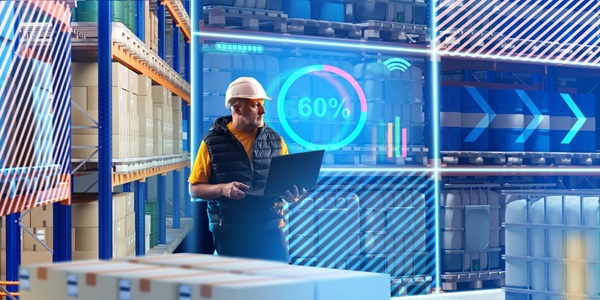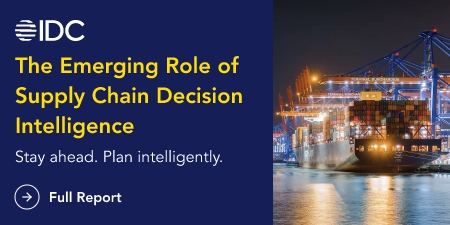
Author: Doç. Dr. Ali Tamer Ünal
Manufacturing companies are in the urge of becoming more and more customer centric these days. Becoming customer centric in manufacturing focuses on putting the customers at the heart of the whole business and manufacturing processes. When we think that way, orders, and so the customers, are already at the heart of the business. So, let’s start with the immediate questions lurking under your skin: Am I not customer centric already? Is this even an issue?
Yes, you want to be customer centric; but, yes, there is an issue!
Yes, you want to be customer centric. We call this: customer centric “by intention.” But, we would like to challenge you to evaluate the degree of compliance to this simple principle in your organization. As a result of this contemplation, we would like to propose that -not being able to align all your operations around a customer-focus- is a big issue, and it is even a much more significant issue than it was before.
The customer is the king.
Obviously. Needless to say, all businesses, including manufacturing companies, primarily strive to serve their customers to the best of their abilities. Competing is the art of winning and keeping customers while operating profitably. For manufacturing companies, it is the most important way to stay competitive and sustain their businesses.
Does everyone in your organization feel the heat of the customer?
Although “Customer is the king!” is the commonly accepted postulate, as the companies grow, this focus is typically applied in the customer-facing processes, and somewhat diluted in all the other operational processes. In a reasonably large organization, processes are distributed among different organizational units. Every organizational unit is given its own local area of focus to operate and excel. Improved classical planning processes and availability of corporate data in transactional systems have enabled us to define local targets for each organizational unit that propagates corporate concerns and track its performance as an independent entity.
Let’s think of an example: Assume that you are responsible for acquiring items from suppliers. Typically, you are provided with a list of items to be purchased with respective required quantities and requirement dates. The basic assumption is that these requirements are calculated within a reasonable planning process in which customer requirements are intelligently considered.
If you accomplish to acquire the items before their requirement dates, you have successfully executed your role. But, at this point, you do not exactly know (or feel) if your accomplishment has resulted in happy customers. Eventual successful service delivery to the customers would require all successive processes (production, delivery, etc.) also to be performed equally successfully within their own targets.
What if I do not feel the heat of the customer as long as I satisfy my targets?
It all depends on how much it costs to satisfy your targets. If everything goes as planned, operating in specialized organizational units under a classical planning process has proven to be a sound and successful practice. Even small or infrequent disruptions can be handled by occasional re-planning.
The challenge is to gracefully handle significant, and in many cases, frequent disruptions. At any possible disruption, how you resolve the operational impact of that disruption would affect the bottom-line of the business.
Let’s look at what happens when a disruption occurs in manufacturing: In our example, let’s assume that the delivery of an item is delayed for some reason. There are several ways to respond to this disruption:
- Do nothing. This is the optimal option if the plan has adequate slack embedded in the system to buffer this disruption, and you have the tools to immediately assess and trigger that slack engagement. The only cost you may incur is the re-alignment of some operations to utilize the slack. You need to be aware of the additional risk created by engaging the slack in future operations.
- Immediately respond using local resources (for example, order an expedited delivery of the item) so that the issue is resolved locally. Hence, make sure that the downstream operations are not affected by the disruption. This option incurs additional operational costs. Also, local re-alignment and re-planning of operations may need to be triggered, which increases the nervousness within the disrupted organizational unit. You also, need to be aware of the additional risk created by engaging the slack in future operations.
- Trigger a re-planning to modify production or order delivery schedules by, optionally, deploying more costly operational modes (such as overtimes, outsourcing, and expedited deliveries to the customer) so that customer order deliveries are performed without any disruption. This option incurs additional operational costs. Re-planning of operations across the organization increases the nervousness within the whole system.
- Trigger a change in the customer order delivery schedules in line with the operational impact of the disruption.
Every course of action may be the optimal response to a disruption depending on the unique circumstances. We claim that optimal operational cost/service level balance can only be achieved if every decision-maker within the organization feels the heat of the customer and holds the pulse of the operational dependencies from their own perspective. With the help of that, they have the power to generate the correct response to every disruption.
How does ICRON help me achieve customer focus?
ICRON defines customer centric planning as an intelligent alignment of all operational, tactical, and strategic decisions around the common goal of sustainable profitability with a clear and actionable perspective on customer satisfaction.
From the perspective of every single decision-maker in the organization, ICRON continually keeps track of the complete supply chain using 2 measures:
- Optimality of the current state (inventories, capacity allocations, etc.) and planned actions (production, purchasing, shipment, etc.). We quantify divergence from optimality as “opportunity.”
- Impact of the current state and planned actions on the successful delivery of customer orders. We quantify the probability of failure in satisfying customer orders as “risk.”
In ICRON solutions, the decision-makers at all supply chain levels are notified about opportunities and risks always imposed by the current state and planned decisions. In the face of disruptions, decision-makers can also immediately observe additional risks and opportunities created by the disruption and perform scenario analysis to evaluate the effects of various response patterns to consistently make optimal response decisions.
If you would like to see ICRON in action, please contact us. If you have enjoyed this blog, you can find more content that you might enjoy here.













